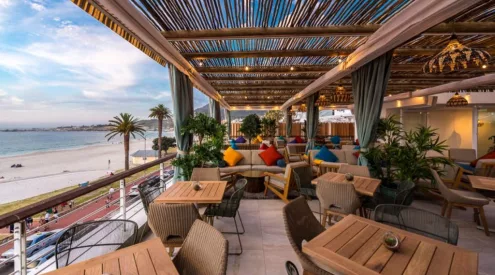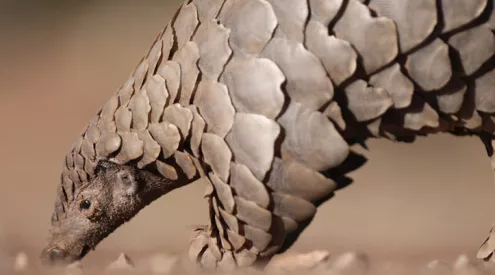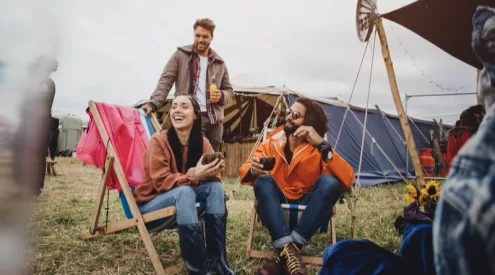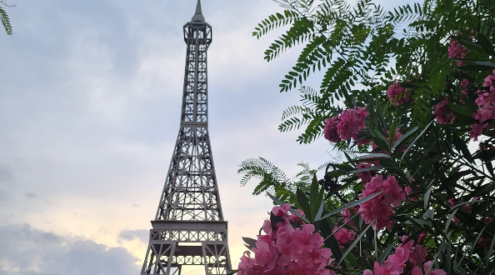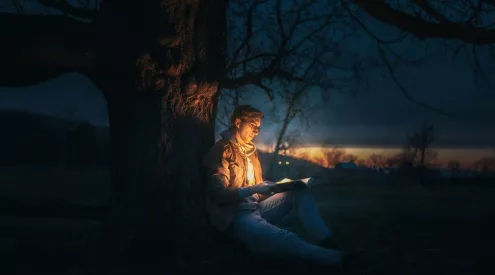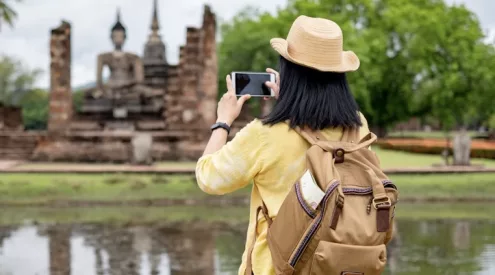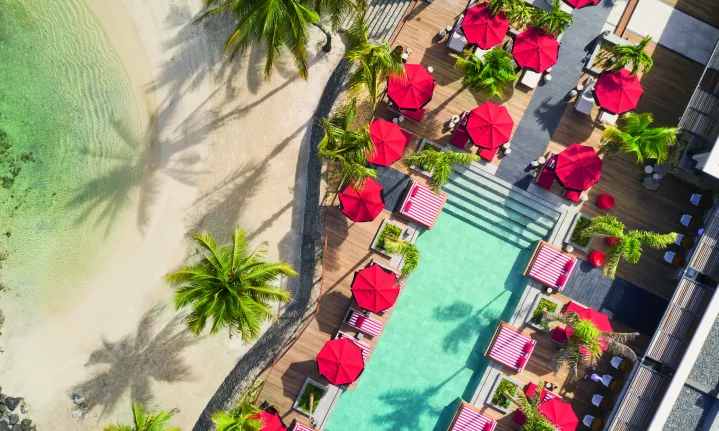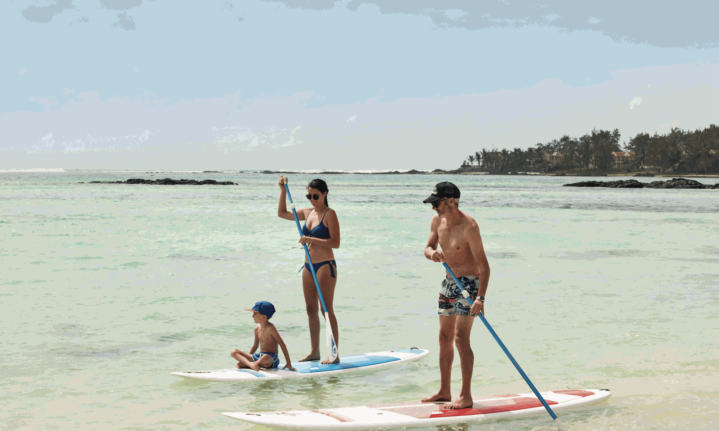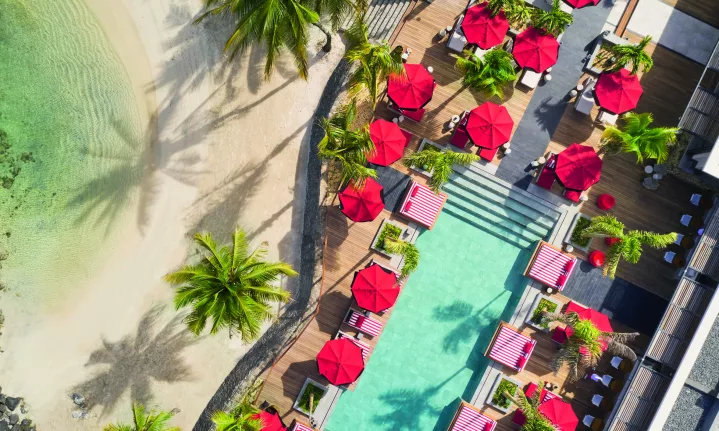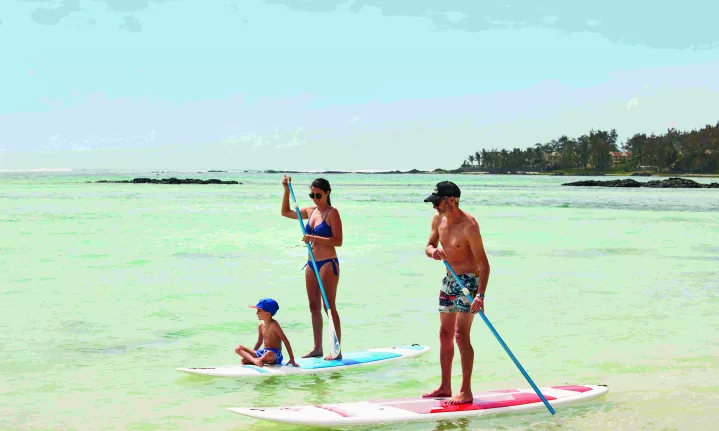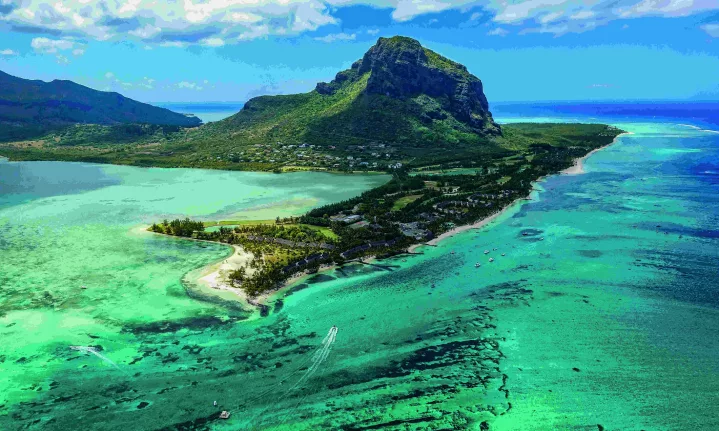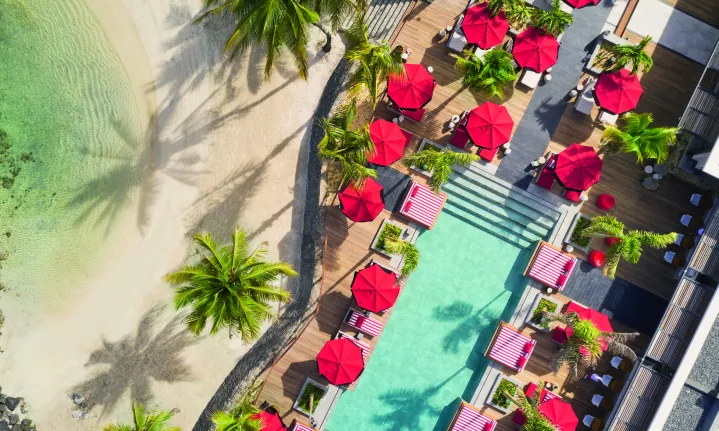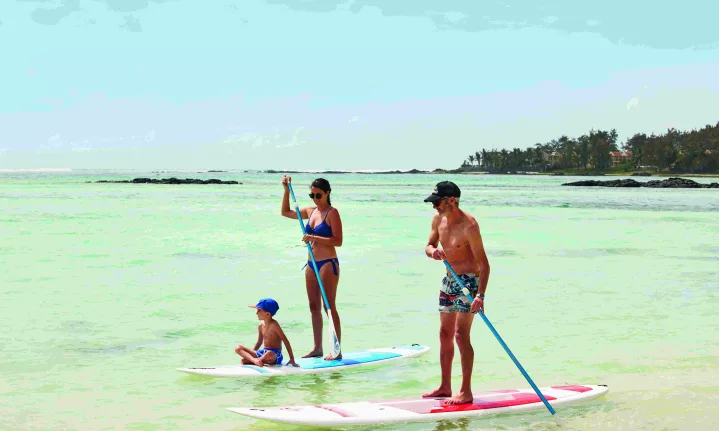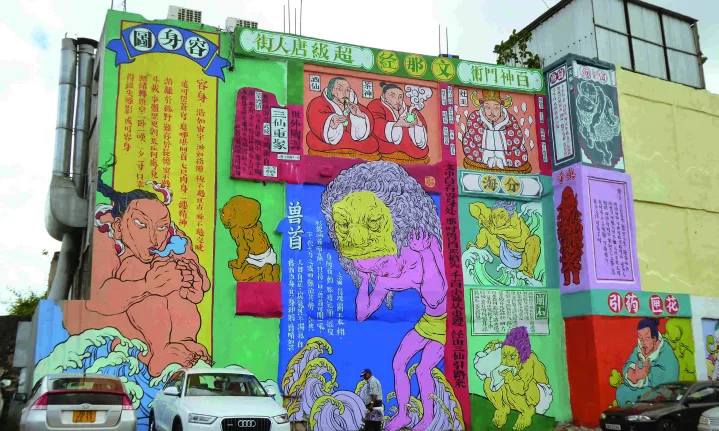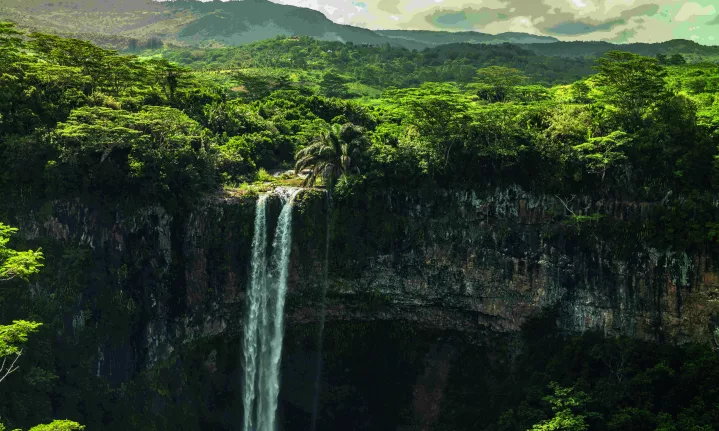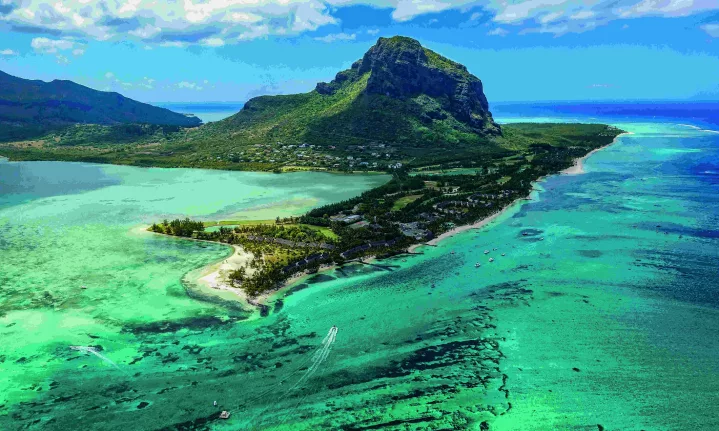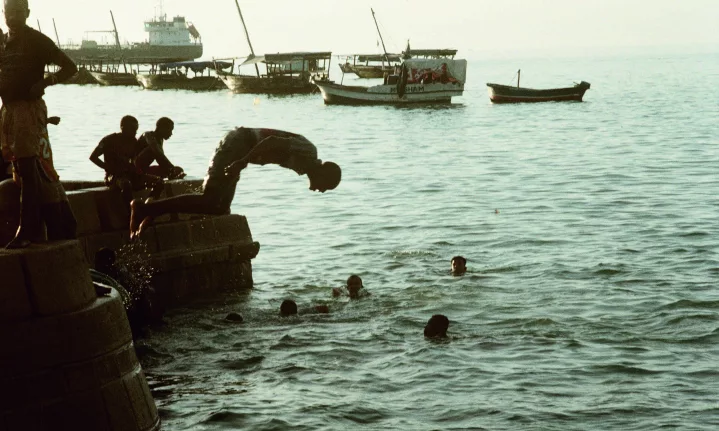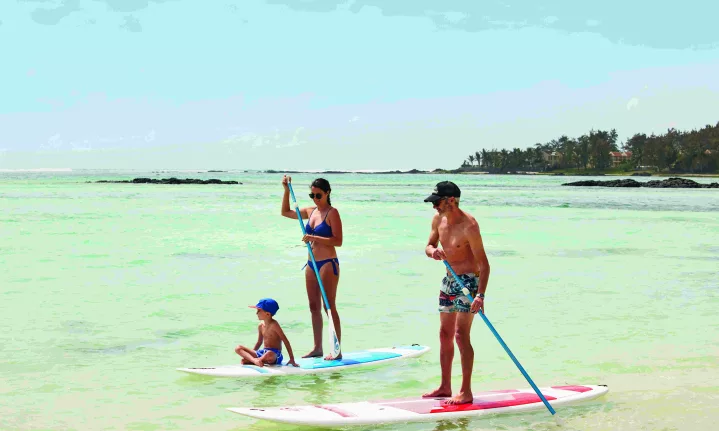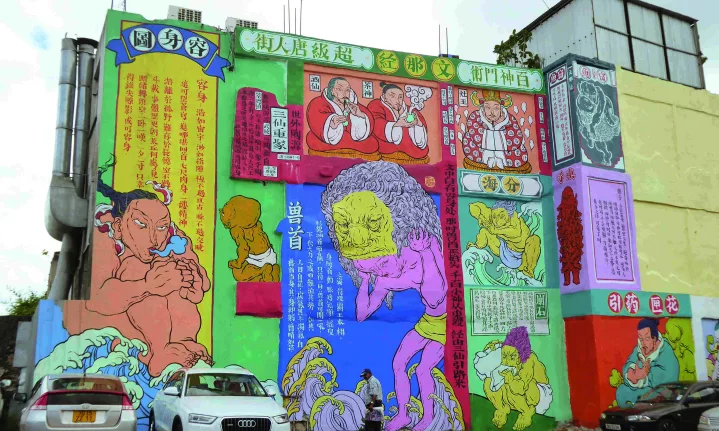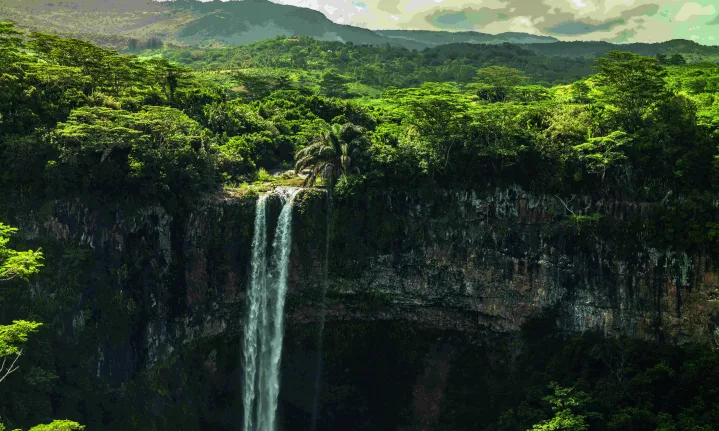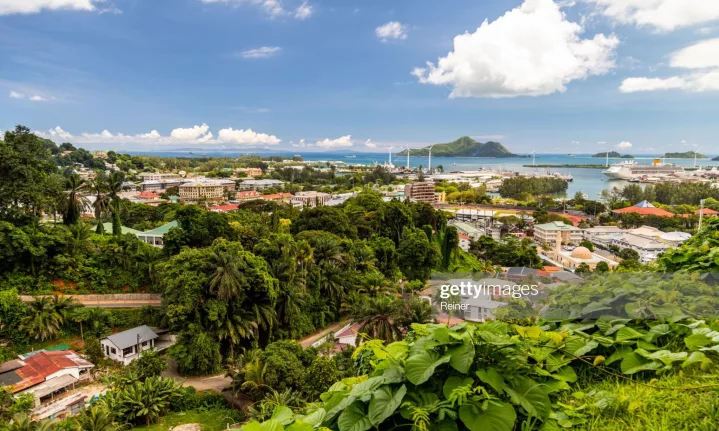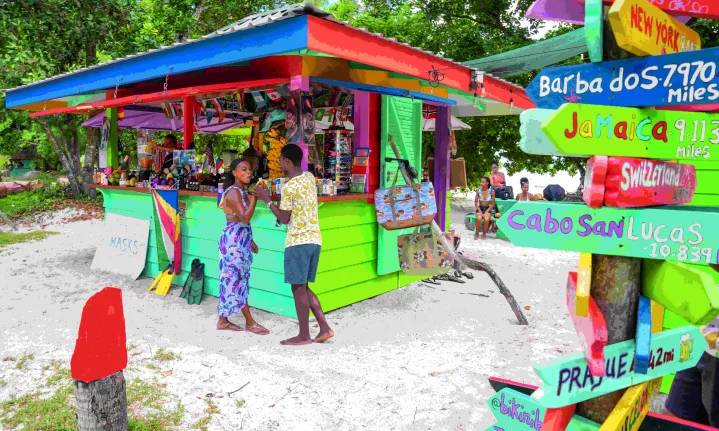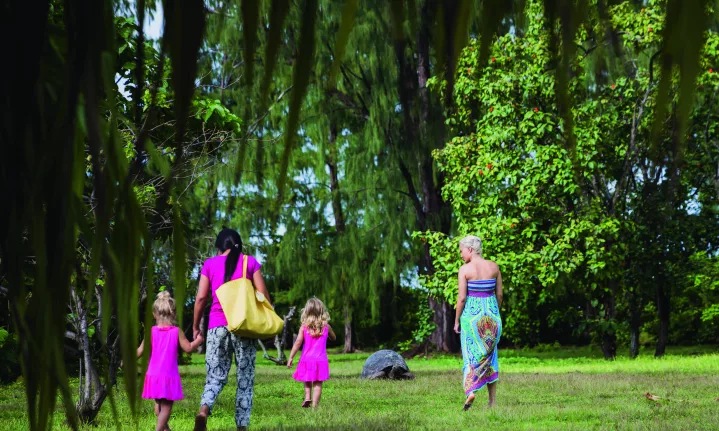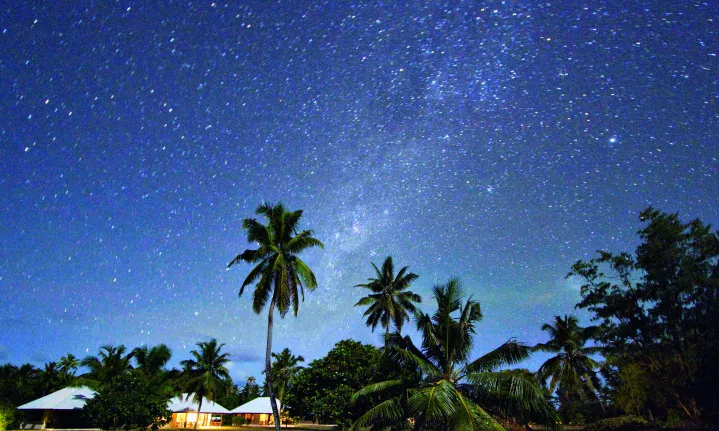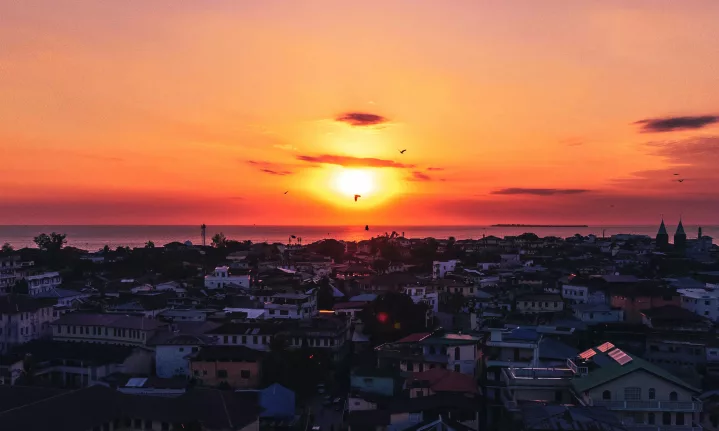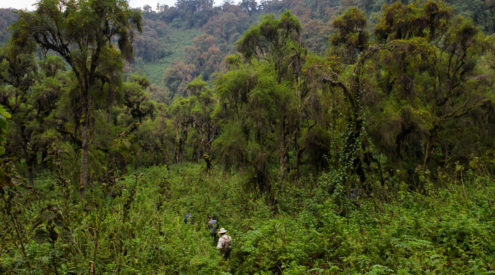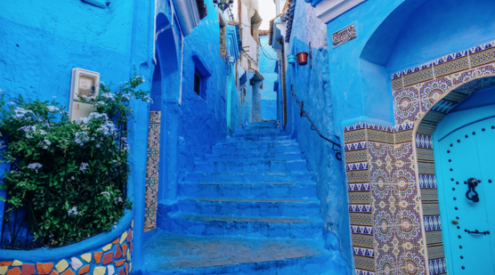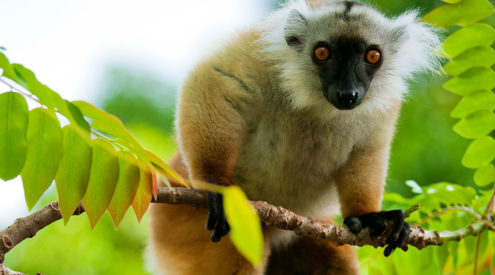The flesh is weak, even more so when you’re in paradise with reality on pause. David Henning braves the seductive power of Mauritius
It’s riddled with paradise clichés: turquoise coves with Photoshopped beaches, luxury resorts with indulgent spas and haute cuisine restaurants. What the brochures don’t tell you about, though, is the attractive older woman who hits on you in the bar. Nor the one at the pool, and again while staring at the sunset on the beach.
You set foot in these fancy resorts and it’s easy to forget reality, lose your mind, kiss total strangers after too many rum cocktails.
Mauritius welcomes you with wide open arms and that humus scent that’s reminiscent of fertility. It’s a place of seemingly effortless abundance, its tropical heat and languid humidity producing a torpor among visiting humans, but causing the volcanic substrate to throw up tracts of jungly vegetation. Some might call it steamy.
Also read: Desert countries to visit – 5 things to do in Morocco
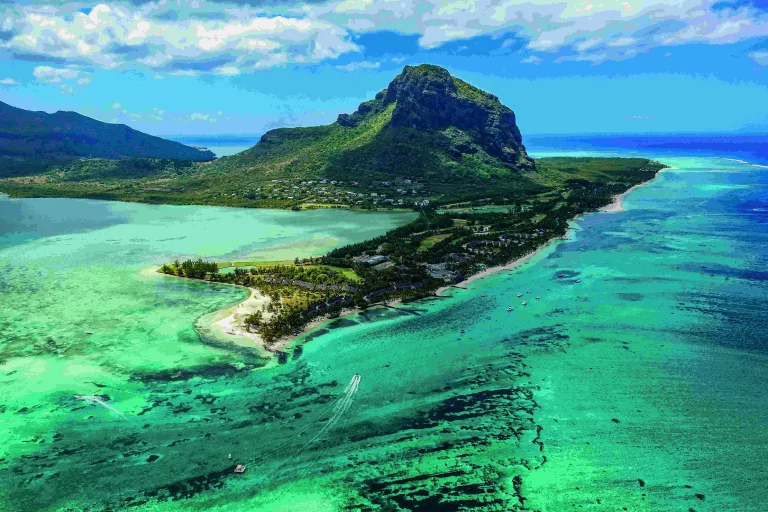
I was being chauffeured to lunch by the schedule-obedient Hashish, trying not to think of the sultry temptress who’d asked me to join her for a selfie in the hotel lobby. Instead I found myself listening to fairy tales while staring up at steep, pointy mountains.
These sharp-rising spires have been bestowed with all kinds of intriguing names. There’s Cat and Mouse, Madonna and Child, The Bodyguard and, of course, Trois Mamelles – or Three Tits.
And then there’s Pieter Both, probably the most iconic peak on the island, triangular with a gigantic head-shaped boulder seemingly balancing on top. It’s in the island’s centre, part of the Moka range that curves around the capital, Port Louis.
Pieter Both stands out not only because it’s the highest of the Moka peaks, but because of the giant boulder that appears to just be balancing on the top, like a bulging head. The legend goes that a milkman from the village of Crève Coeur awoke to the melody of fairies singing – they then warned him that if he told anyone else about the secret of their existence, he would turn to stone.
The milkman, unable to keep his mouth shut, blurted the secret and was petrified as per the fairies’ warning. The characteristic peak is said to be his bloated head, a vivid warning to all that promises should be kept. The peak didn’t get the milkman’s name, though, but instead is named after the first governor-general of the Dutch East Indies.
Get your fill
It wasn’t too far from the ill-fated milkman’s village that I had my first real date with Mauritius.
Culinary date, that is.
It was pouring with rain when we arrived at Escale Creole (literally “Creole Stopover”). Hashish said: ‘If you want the rain to go away, you’ll have to clean your plate.’
From the car, I rushed through the rain towards a sheltered verandah where Marie-Christine Forget welcomed us to her home. ‘Come sit,’ she said, ushering us to our table where we were served snack platters of coconut chutney, banana chips and breadfruit fritters.
Marie-Christine opened the restaurant with her mother, Maja, 25 years ago on their strip of family land and on the verandah of what appears to be a family dwelling.
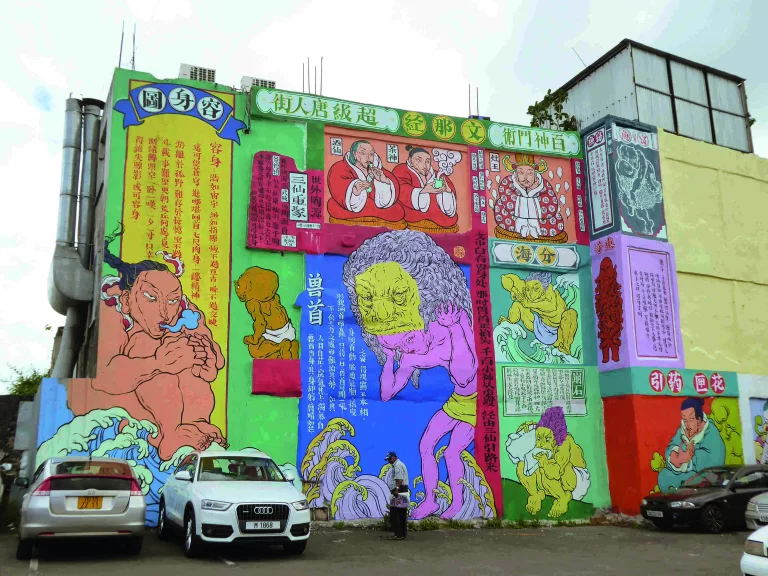
It is an unpretentious place buzzing with conviviality, with the sound of Mauritian sega music resonating through the restaurant, the buzz of conversations across the table and the staff apparently in a jovial mood, too.
The abundant snacks made way for abundant plates of homemade sausages served in a rich tomato rougaille stew, and there were more pots on the table brimming with fragrant fish and a spicy octopus curry.
I obeyed wise Hashish’s advice and cleaned my plate several times over and, like in any prophetic fairy tale, the rain had cleared by the time we rolled back to the car for the short drive to Port Louis on the other side of the mountain.
At the famed Victorian-era central market, a riot of colours and competing aromas enfolded us. Stalls stocked with breadfruit, oversized green litchis and bright red dragonfruit gave the place an exotic twist. As did the spice vendors and stalls dedicated to more esoteric products, such as the one proffering “Aphrodisiaque”.
Beyond the market, we explored the city’s bustling Chinese quarter, noting pagodas, Sino-Mauritius food stalls and loads of colourful street art.
The next morning brought an opportunity to work off the decadent dining. Hashish took us to a bay where small fishing boats were coming in and where we met Patrick Haberland of Yemaya with a few kayaks ready. We headed off for Ile d’Ambre, one of Mauritius’s last wild sanctuaries on a small islet in the north of the island. There we paddled through the hidden channels between mangrove forests that surrounded the islet.
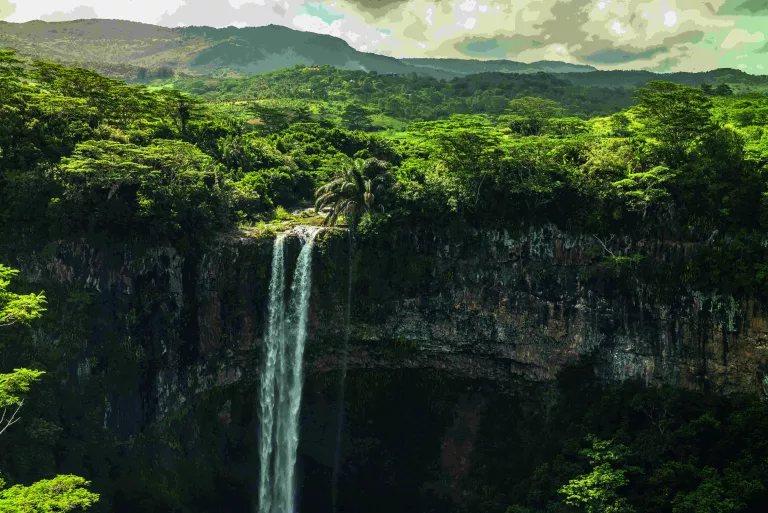
Patrick explained that this little piece of land is thought to be the place where the last dodo was killed. Even more sobering was the revelation that only 5% of Mauritius’s indigenous flora still exists today.
If mangroves are evidence of Mauritius in its more natural state, sugarcane is perhaps the most obvious evidence of how people have conquered the land. The crop is cultivated on 85% of the island’s arable land. Don’t be fooled by the rolling green monotony of agriculture, though, because there are still pockets of raw wilderness that exist, even at the fringes of the tall cane fields.
Much of this wildness is evident in the island’s south, where the coastline is heavily affected by the lack of coral reefs that surround much of Mauritius. This means that waves crash violently into the sheer cliffs that jut defiantly into the sea. It makes for breathtakingly scenic drives and wondrous coastal hiking where you sometimes feel poised on the edge of the world, and can almost swear you feel the Earth turning as the wind and seaspray blast against you.
There are some lovely hidden gems to be discovered in the south, too. Like Mala Goburdhun’s Bel Ombre Cafe, which she has run out of an old green bus on the side of the road for almost 30 years. She’s even kept the original seats of the bus for her legions of fans to sit on while eating: Mauritians can’t get enough of her home-cooked curries.
In gods we trust
As we cracked on towards the winding roads of Black River Gorge Reserve we passed through villages where mosques and Hindu temples stand side by side. ‘I am a Hindu, my wife is Muslim and our two kids are Catholic,’ Hashish told me when I pressed him for an explanation. Multiple beliefs, he explained, are part of Mauritian culture. It’s not just in the spirit of tolerance and acceptance, though; he said religious syncretism thrives, too. In some communities, people celebrate their neighbours’ religious festivals and even worship alongside one another.
A winding road led us to Ganga Talao, a lake that’s said to be the most sacred Hindu site outside India.
People of Indian descent make up most of the Mauritian population, with more than 450 000 indentured labourers having come from the subcontinent between 1824 and 1930, and two-thirds of them having opted to remain when their contracts expired.
Hindu temples scattered across the island are testament to this heritage but the lake has special reverence in that it’s believed to be directly connected to the Ganges.
Every year about 600 000 pilgrims from across the island walk to the lake – also known by its French moniker, Grand Bassin – during Maha Shivaratri. During this celebration, pilgrims perform Kanwar Yatra – dressed in white, they collect water from the sacred lake to pour at the feet of the colossal Shiva statue that overlooks the lake. This Shiva effigy is 33m tall, as is the adjacent statue of the goddess Durga.
Public celebrations of Holi were called off because of the pandemic, but this didn’t mean I got to leave the lake without a dusting of colourful powder thrown in my face. I took it as a blessing, and made a secret compact with Shiva that he’d help me resist whatever temptations awaited me back at the hotel.
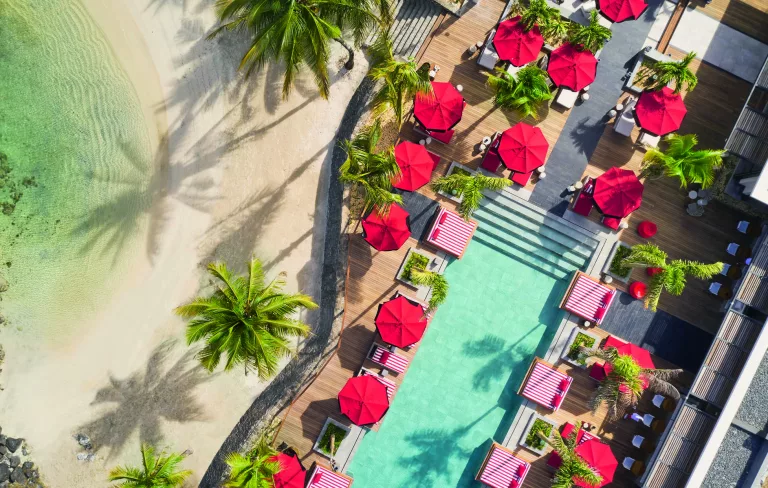
C Mauritius
In Palmar on the east coast, this down-to-earth resort is all about immersion, with lots of activities to keep energetic sun- and fun-seekers engaged. From grown-up swings dangling from palm trees and guided adventures to Le Pouce Mountain, there are also nights with DJ sessions on the beach, and lagoon outings on a pirogue. There’s a freshness to this refurbished property, and lots of variety when it comes to choosing what and where to eat – aside from four restaurants, there’s a deli next to the beach. Plus, there’s three pools, a spa and all your stand-up paddling, snorkelling, kayaking and kitesurfing needs accounted for.
From €350 per room pn
Tel +230 460 1000
Lux* Grand Gaube
“Lux” is not a lazy abbreviation for “luxury”. It’s Latin for “light” and at the eponymous Lux* resort chain, the translation is taken quite literally. Throughout Lux* Grand Gaube there are bright, light-filled expressions of that fresh, preppy contemporary look to which millennials are drawn. Perhaps the light favours Instagram? Certainly, it’s the kind of resort favoured by millennials looking for that “curated” experience. Draped in bougainvilleas, the pale-hued suites and villas are arranged in crescents overlooking the water with Coin de Mire island cradled in one bay. And, beyond the beauteous setting, there’s an almost infinite number of activities – from food to adventures – to keep busybodies buzzing.
From €418 for two pn
Tel +230 204 9191
luxresorts.com
Lux* Grand Baie
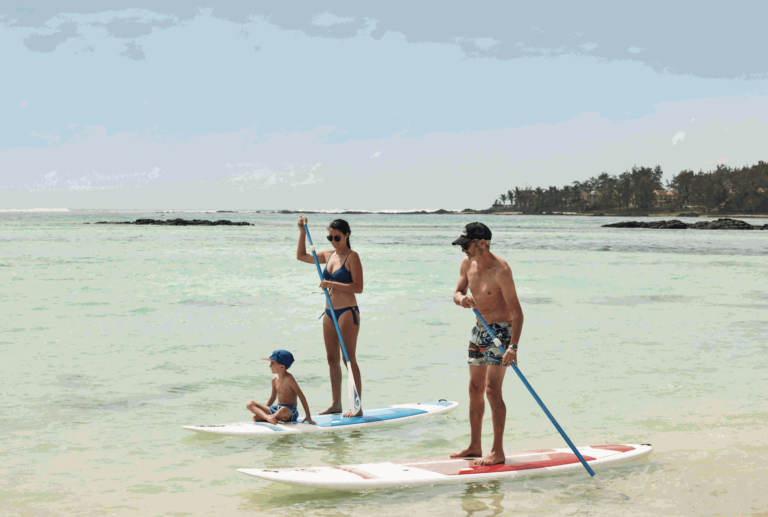
At this stylish new spot in northern Mauritius, it’s tempting to get stuck in the resort, especially since it makes such a valiant attempt at trying to bring the world – especially the culture of Mauritius – to you. They do a pretty tempting job of convincing you that this is how the world should be. Aside from its setting on a beautiful bay, there’s extravagance aplenty: five pools (including one on the roof), music spilling out of everywhere almost perpetually (there are speakers in the trees and in the garden beds), bars, a beach club, and curated activities to ensure you need never have a dull, unaccounted for moment. Lux* has its own in-house gelato and is up-to-date with shifting dietary trends: plenty of plant-based dishes are on offer.
From €559 for a junior suite, for two pn
Tel +230 209 2200
luxresorts.com
Salt of Palmar
Progressive, unorthodox, experiential and aesthetically accentuating the island’s enduring state of tropical bliss, Salt is a 59-room hotel that opened in 2018 with a mix of bold colour and elegant minimalism that works incredibly well in a hot and frequently humid environment. The vibrant design is the result of a collaboration between French artist Camille Walala, known for her vivid murals, and Mauritian architect Jean-François Adam, who repurposed an existing riad‐like building on the edge of Palmar’s white sand beach and transformed it into something that looks and feels like a true original, full of new ideas. Aside from communal tables in the restaurant, bakery and beach bar, it has the island’s first roof-top bar and local artisans were tasked with making everything from handwoven basket beach bags to rattan chairs. Salt has its own farm that supplies the kitchen – other produce is locally sourced and there’s a circular system in place that ensures zero food waste. There are no buffets, no fixed TV screens, and no single-use plastics either.
From €123 pn for two for a garden-view room
Tel +230 698 2727
Otentic
For something very different, skip the full-blown resort experience and opt for one of these eco-tents at the island’s first glamping establishment, a miniature backpacker-style resort with sustainability in mind. It offers such activities as kitesurfing, canoeing and reef snorkelling. No keys, no key cards, no locks, no doors. There are zips, though, and Velcro strips, and inside your big, sturdy safari-grade tent-on-stilts, there are beds assembled from recycled palettes. But no plastic, and no senseless fripperies – no minibar or phone, no TV and definitely no aircon. Instead, the breezy space has rustic furniture made from recycled crates and the wood-panelled bathroom is made from old beams and planks, heavily stressed with flaking paint. All tents can sleep two adults and three children, or four adults.
€120 per tent pn (and less for more nights)
Tel +230 5941 4888
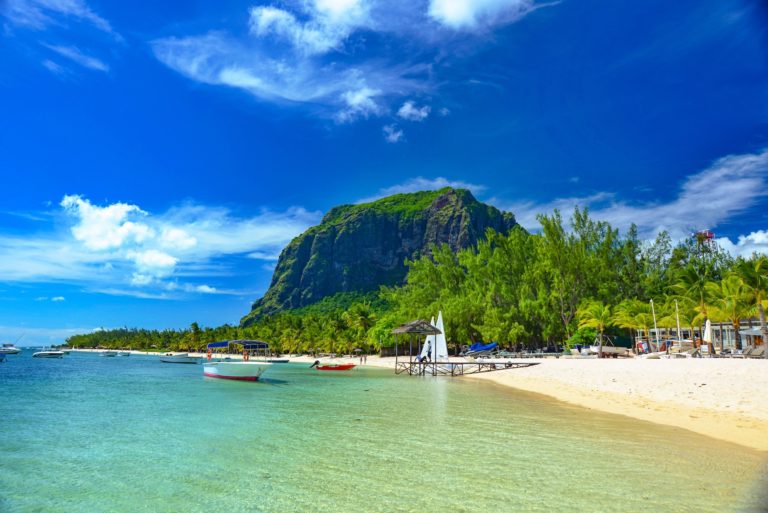
Hike, run or take a picnic
Once you see beyond the optical illusion of flat expanses implied by vast acreages of rolling sugarcane, you start to spot the island’s pointy towers and granitic ridges that loom like prehistoric shadows, full of knots and crags and sharp, pinnacle-like peaks. And, between these, plummeting gorges cut through with forests and waterfalls. There are plenty to explore, these are a few…
Black River Gorges National Park
Covering 7 000ha, the island’s only national park has a wide selection of trails – you can walk for several days without repeating the same loops, although you’ll need a guide to discover some of them. Aside from jungle-like vegetation, this is the best place to spot the island’s rare pink pigeons, rose-hued prehistoric doves that numbered just nine in 1990.
Tamarind Falls
An adventuresome three-hour hike through a verdant tropical forest takes you to a series of water-spewing cataracts situated on the Rivière Tamarin, not far from Mare aux Vacoas, a large lake on the island’s central plateau. Also known as the ‘7 cascades’, the beautiful, unspoilt canyon comprises waterfalls ranging between 10- and 55m in height, with steep drop-offs and deep pools, all cradled within a spectacularly beautiful nature reserve. You can swim in natural rock pools beneath the cascading waters.
Le Morne Mountain
During the 18th century this mountain on the southwestern peninsula became a refuge for runaway slaves. Little is known of their lives up there, but evidence suggests they kept goats, grew fruit and vegetables, collected rain water, and survived. When the British abolished slavery in 1835, an envoy of English policemen was dispatched to let the mountain-dwelling maroons know that they were no longer fugitives. Tragically, assuming that the officers were coming to capture them, they leapt from the summit to their deaths rather than return to the sugar plantations. Also known as the Slave Route, the trek up Le Morne includes steep sections, some height exposure and virtous views; the ultimate summit, where the maroons took refuge, is closed to hikers.
Le Pouce
Named for its thumb-shaped pinnacle, “The Thumb” forms part of the Moka range, between the head-shaped Pieter Both peak and Signs Mountain. Pieter Both is a dangerous climb, but this mountain – the island’s third highest (812m) – is said to have first been climbed by Charles Darwin in 1836. It’s an easy 90-minute trek that you can start in Port Louis. Hiking starts through cane fields, and at the top there are panoramic views of the city, its harbour, tiny offshore islands, and across the north of Mauritius. The summit is barely big enough to spread a picnic, but take one nonetheless.
Discover Mauritian culture
‘I think we were cursed by beauty,’ says historian Shakti Callikan, co-founder of the cultural tourism company, my Moris, which conducts walking tours of Port Louis, village tours by bicycle, plus all kinds of unique interactive experiences. ‘Because Mauritius is so naturally beautiful, we’ve rested on our laurels and failed to showcase our culture. It saddened us that all the activities focused on the sea and the beach and nature, but nothing on the cultural side. Mauritius is incredibly unique, with such a diverse population inhabiting such a small island.
‘All these different populations that came here had to adapt first to the place, and secondly to each other. We have more than a dozen spoken languages but the close proximity of different heritages also created a unique Creole culture. All these heritages, compelled to coexist in this condensed territory, have adapted, intertwined and evolved. And they’re still evolving. We discover new things all the time.
‘For instance, there’s an unknown, very low-key Hindu festival that no-one talks about. It’s a Hindu women’s festival. They fast for 24 hours to protect their children, and then they go to the river where they perform Hindu rituals, pray with their friends and families, then they go to the Catholic church, where they stop to pray, but they pray the Hindu way.
‘They remove their sandals and flip-flops before entering the church, and they give offerings of flowers to the Virgin Mary, and they sit and pray in that church. It’s a special kind of syncretism, and it’s found across the island. If they’re Catholic, they’ll definitely pray to Jesus Christ and Virgin Mary, but if they feel that’s not enough, they’ll go and pray to Kali, because Kali is a very powerful Hindu goddess.’
ALSO READ: Island escapes: Swahili sunsets in Zanzibar



